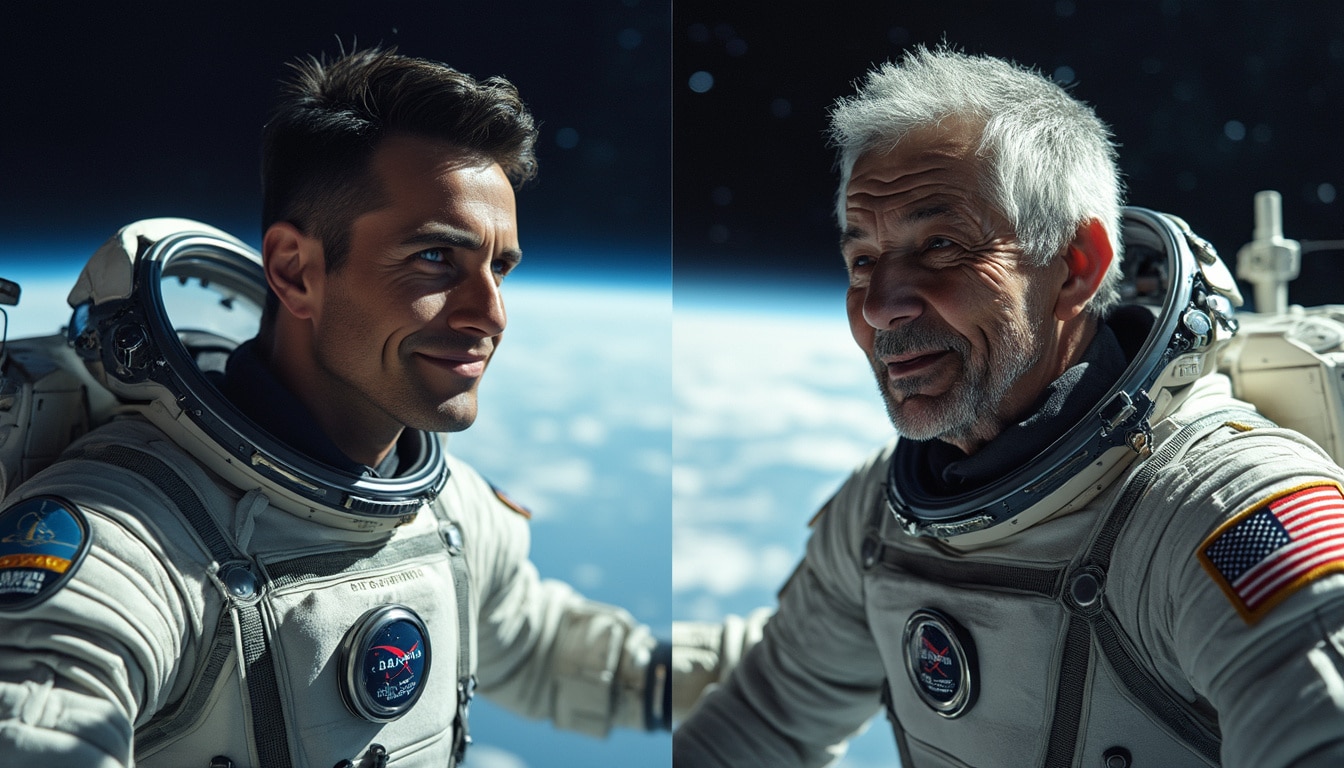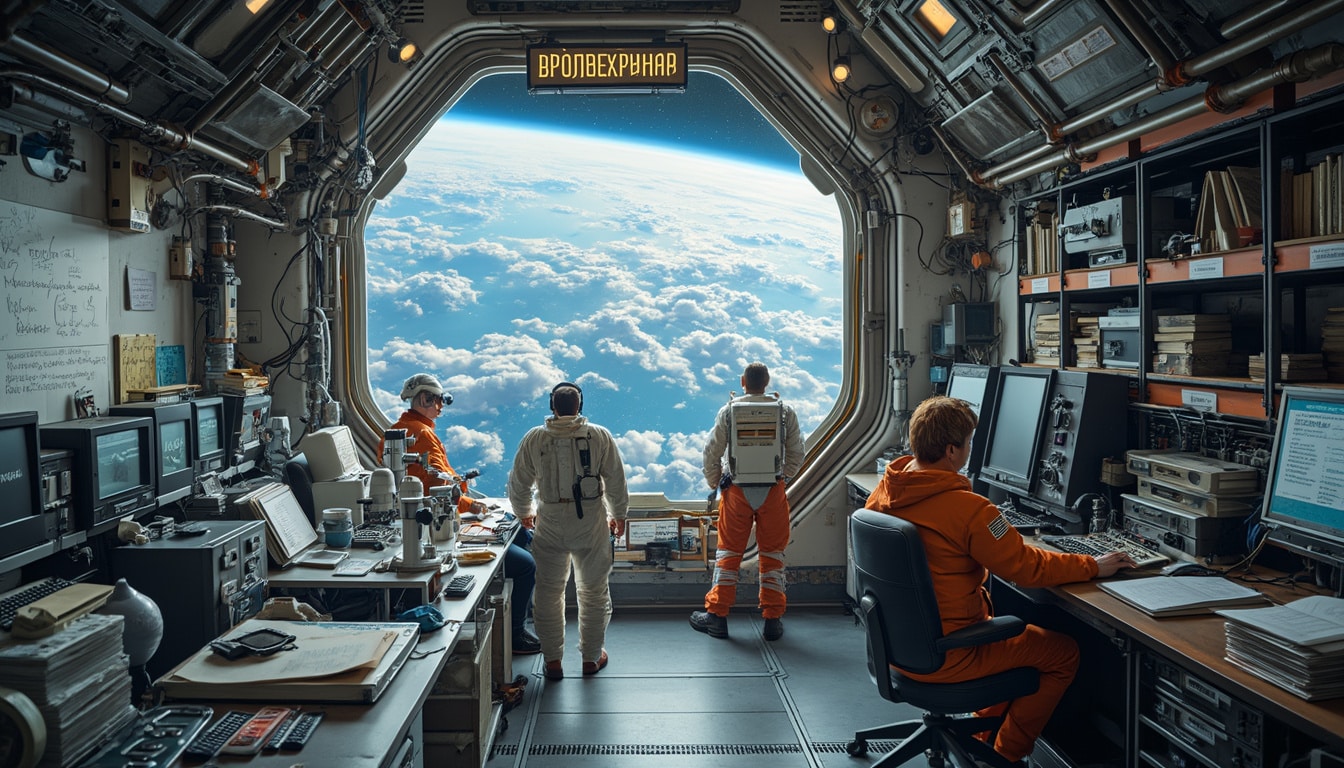The phenomenon of space inevitably sparks curiosity and speculation. Recent claims circulated regarding NASA astronaut Sunita “Suni” Williams, alleging she returned to Earth with dark hair after a long mission on the International Space Station (ISS), despite having gray hair while in space. This narrative has triggered a flood of memes and discussions across various social media platforms, leading to misunderstanding about the context of the images shared. Analyzing the facts behind these claims reveals a rich tapestry of what truly occurs during extended spaceflights, from physical changes to the effects of being in a microgravity environment. This article will delve into the truth behind these images, exploring the rigorous documentation maintained by space agencies like NASA and the implications of such visual misunderstandings.
Understanding the Claims: The Images in Question
Initial reports and social media posts suggested that photographs of Williams, appearing with dark hair upon her return from a nearly nine-month mission aboard the ISS, contradicted prior images where her hair was gray while in space. Observers noted a stark difference in her appearance, raising eyebrows and spurring rumors about the nature of space travel and its effects on human physiology. There were accounts of users on platforms like X (formerly Twitter) expressing disbelief that someone could retain their usual appearance after such a prolonged period away from Earth’s familiar gravity and amenities.

The Timeline and Context of the Images
To clarify the confusion, it’s important to establish the timeline of the images making the rounds online. The photographs that depicted Williams with dark hair were captured prior to her spaceflight, specifically in June 2024, before she boarded the Boeing Starliner for her mission. This fact has been substantiated by reputable sources, including reports from Agence France-Presse, which holds rights to these pre-mission images.
During her time aboard the ISS, Williams’ hair indeed grew out, and she was seen with her natural gray hair in official NASA broadcasts and images. This documentation helps dispel any misconceptions about hair color transformation due to microgravity or other extraterrestrial influences. An image from February 19, 2025, confirmed her gray hair while on the ISS, contradicting the narratives that suggested something supernatural or inexplicable had occurred.
The Role of Social Media in Spreading Myths
User-generated content across various social media platforms has exaggerated coincidences and propagating misinformation. One meme humorously speculated that ‘gravity has its effects’ regarding hair color, providing an amusing twist to the discussion but also leading to the misconception that Williams had transformed her appearance in some mystical fashion by simply being in space.
This form of speculation can often overshadow scientific explanations. A thorough fact-check of these claims reveals the origin of each photograph and situational context, which highlights the necessity for skepticism when assessing viral stories online.
The Impact of Long-Duration Space Missions
Long-duration missions aboard the ISS offer invaluable insights not only into the mechanics of space operations but also into the physical and psychological strains endured by astronauts. Issues that arise in microgravity include muscle atrophy, bone density loss, and altered fluid distribution in the body, which can lead to noticeable changes in appearance over time.

Effects on Hair and Skin in Microgravity
While many people griped about hair color changes, less focus was put on the real effects of prolonged exposure to microgravity environments. Studies indicate astronauts face challenges like changes to their skin and hair. Some have even reported an increase in hair shedding, further countering any assertions implying hair could change color over a mission. These changes suggest that physical appearance might fluctuate as a natural response to robotic and human intervention, not magical transformations or fictitious salon treatments occurring in orbit.
The Role of Scientific Documentation in Space Exploration
NASA maintains detailed records of astronauts’ conditions throughout their missions, which has immense importance not only for current missions but also for future explorations, such as potential missions to Mars or lunar colonization. Addressing physical changes in astronauts contributes to developing effective countermeasures, ensuring that crews remain healthy in prolonged spaces without unnecessary side effects.
Misrepresentation and Its Consequences
The misrepresentation of images can foster public distrust and myths that undermine the integrity of the scientific community. The claims regarding Williams’ hair serve as a prime example of how swiftly misinformation can circulate. The implications of such rumors can extend beyond simply sharing memes; they can potentially affect public funding for space programs such as NASA, SpaceX, and emerging private space companies like Blue Origin and Virgin Galactic.
Addressing Public Perception of Space Exploration
Understanding the importance of effective communication in handling public perception is crucial. Organizations like NASA, SpaceX, and Boeing face an uphill battle in combatting misinformation while promoting transparency about their missions and the challenges astronauts face. Future missions are likely to see initiatives aimed at improving information dissemination to combat erroneous narratives about the effects of space travel.
Combating Misinformation through Engagement
With misinformation prevalent, authorities must engage actively with the community. By creating informative content that reflects real experiences in space, organizations will help establish a more informed public. Hosting live Q&A sessions, educational blogs, and providing accurate updates can create visibility that counters viral misconceptions.
| Space Company | Notable Missions | Focus Area |
|---|---|---|
| NASA | Artemis Program | Moon and Mars Exploration |
| SpaceX | Crew Dragon Missions | Commercial Spaceflight |
| Blue Origin | Suborbital Flight Experience | |
| Rocket Lab | Electron Rocket Launches | Small Satellite Deployment |
| Sierra Nevada Corporation | Crewed Dream Chaser | Reusable Spacecraft Technology |
Final Thoughts on Space, Science and Social Media
In a world where information spreads like wildfire, it is imperative to foster an environment of critical thinking and skepticism. The truth behind the misleading images of Sunita Williams showcases the intersection of science, public discourse, and social media’s impact on our understanding of space exploration. As humanity progresses into the cosmos, the truth must accompany us, illuminating our path and challenging the misconceptions we face along the way.




Leave a Reply